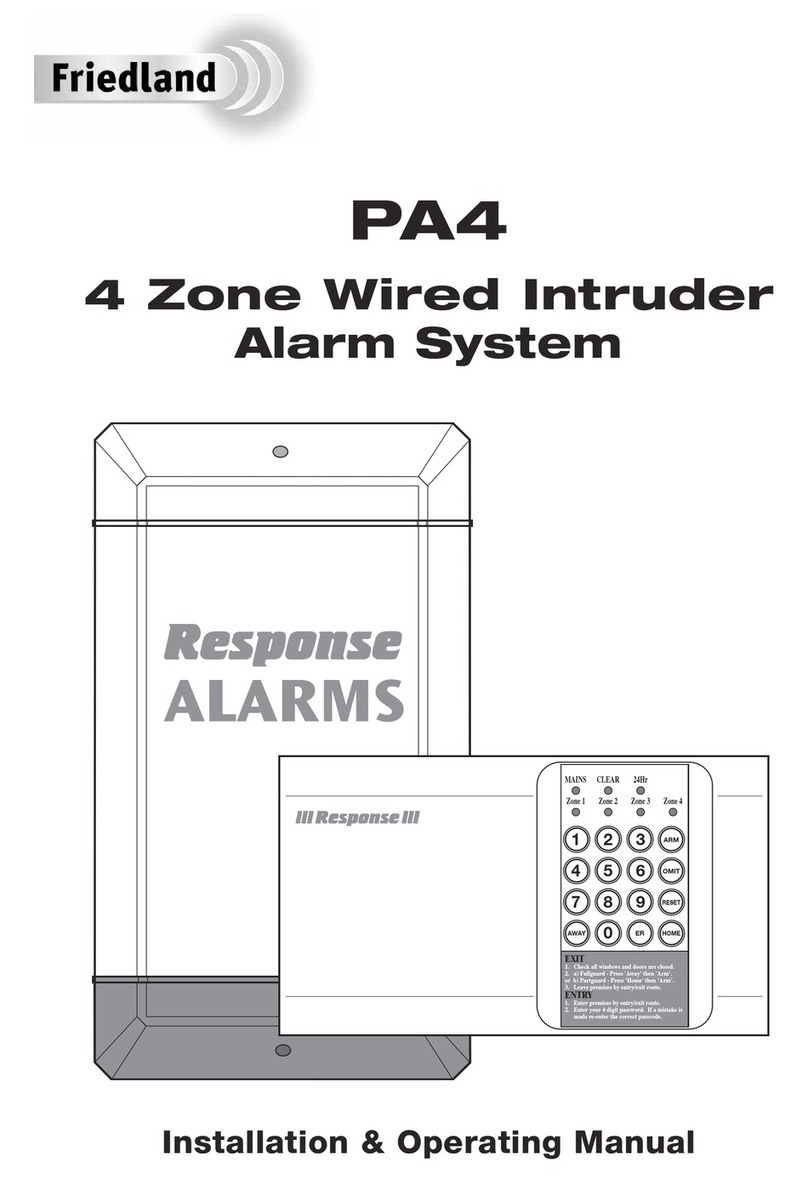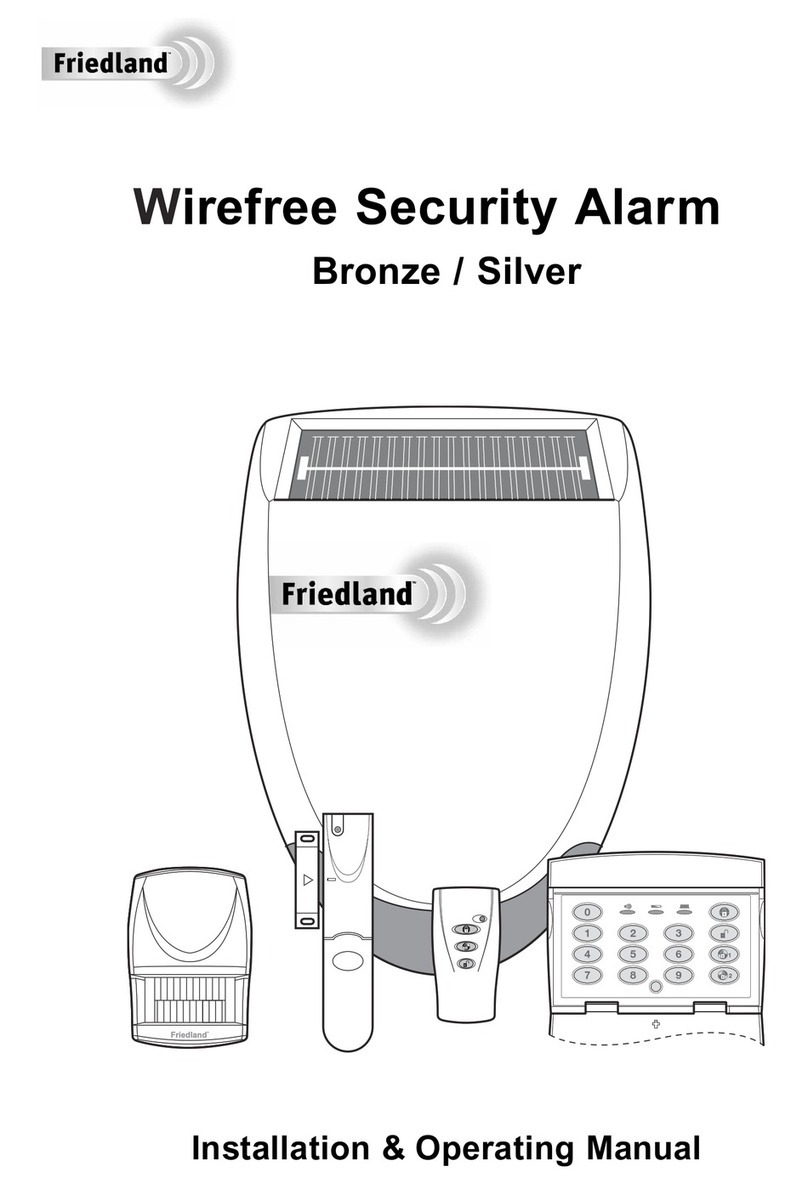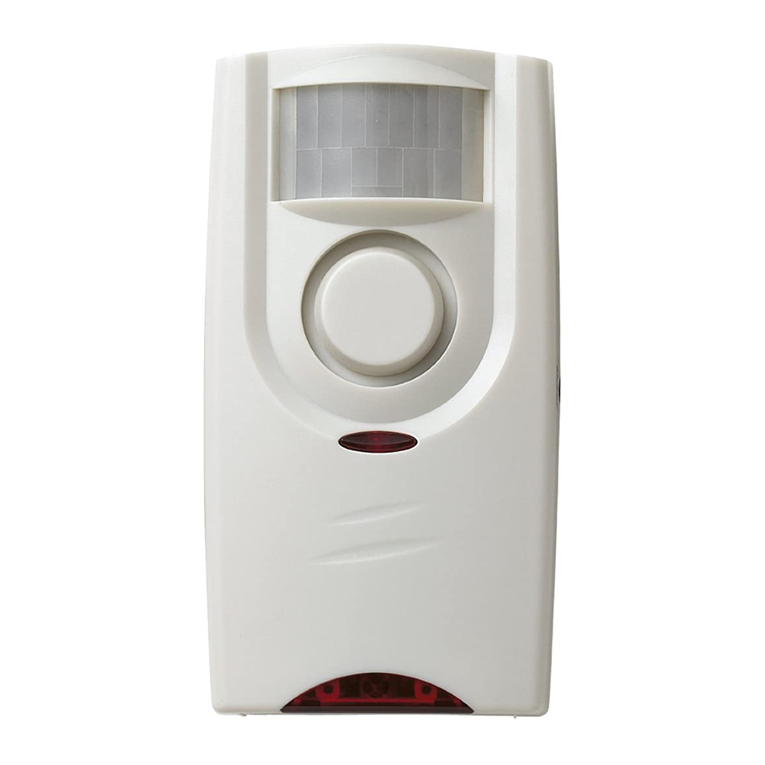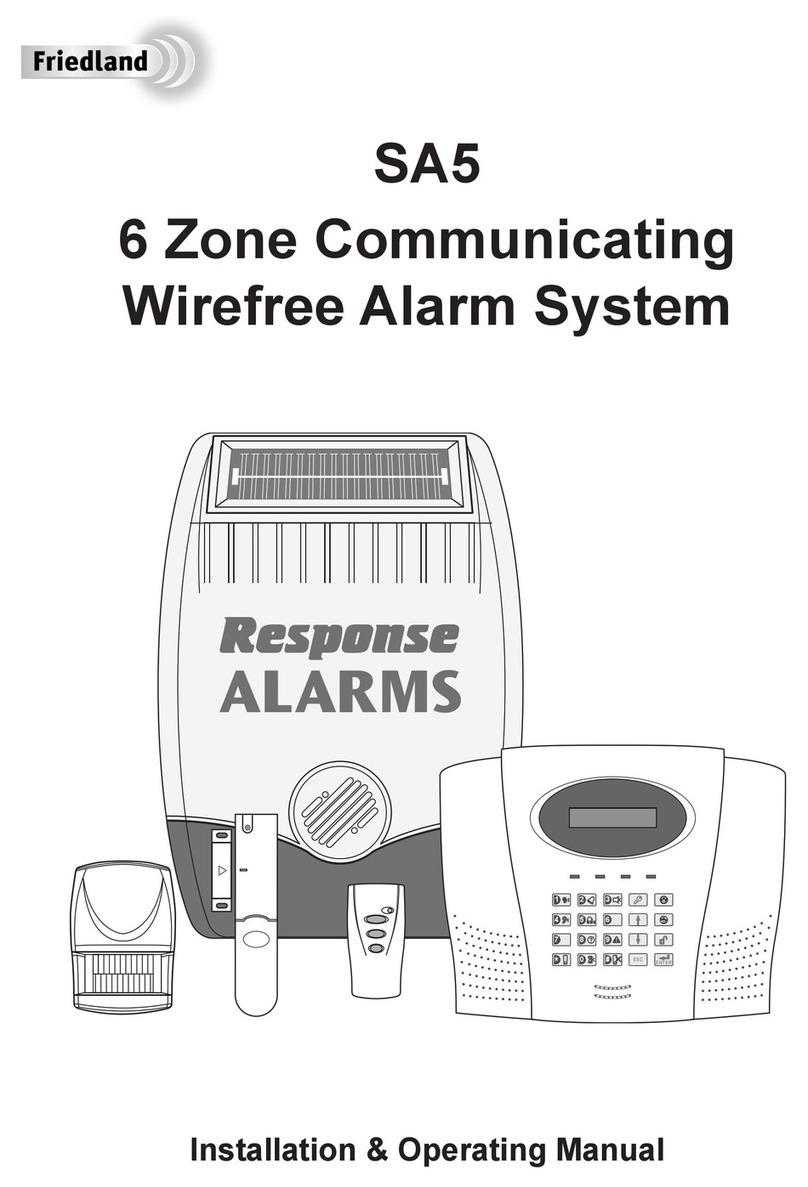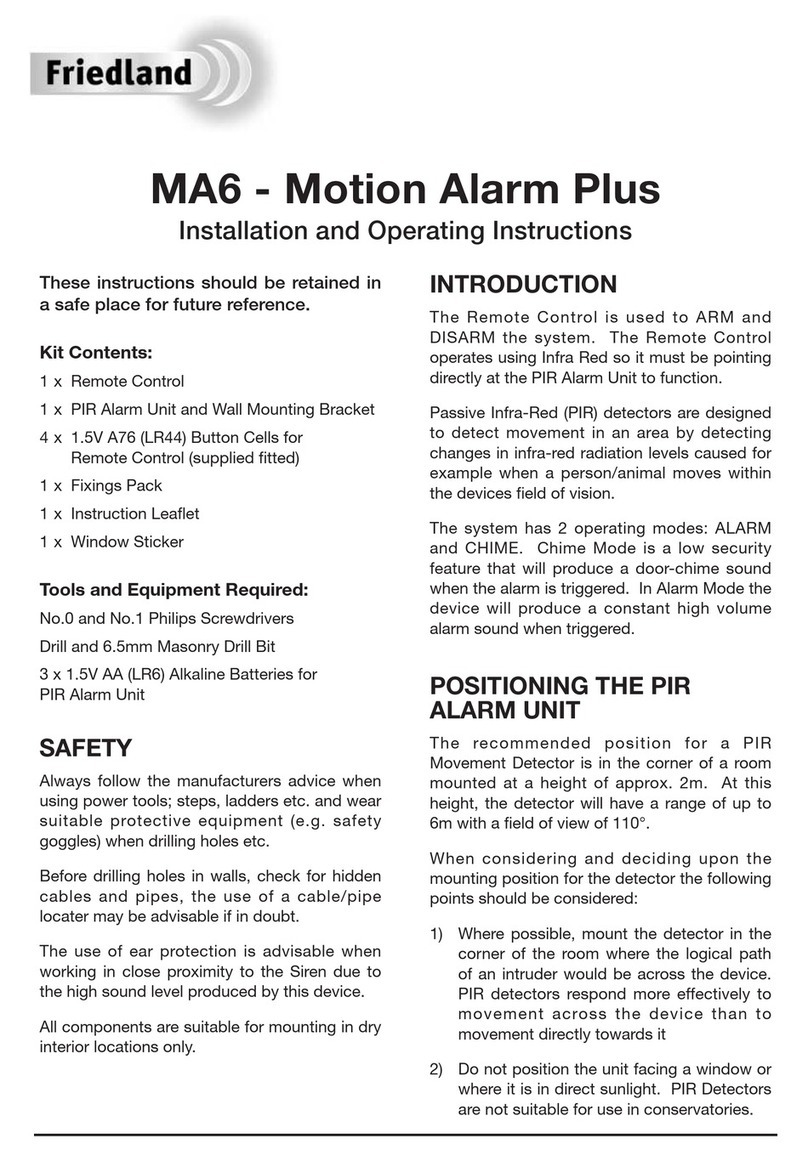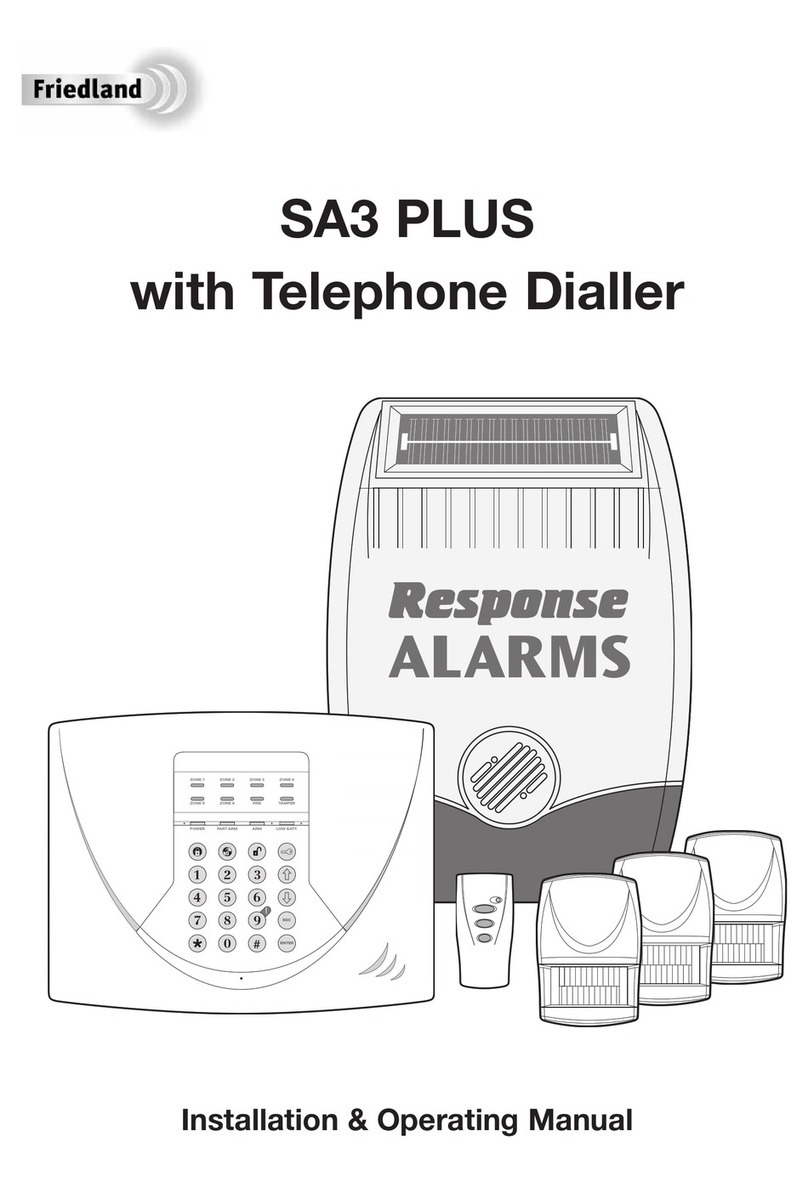FOREWORD
All components in this wirefree Alarm System are
designed and manufactured to provide a high standard
of security protection and long, reliable service.
The system is designed for ease of installation using only
conventional domestic tools. However, it is essential
that the installer reads and fully understands the advice
and procedures contained in this manual and plans the
system before proceeding with the installation.
During installation, it is important that the procedures
described in this manual are followed in sequence.
This manual should be retained in a safe place for
future reference.
IMPORTANT
All components are suitable for mounting in dry interior
locations only.
DECLARATION
Friedland hereby declares that this wirefree alarm
system is in compliance with the essential
requirements and other relevant provisions of the
Radio and Telecommunications Terminal Equipment
(R&TTE) directive, 1999/5/EC.
Tools and Equipment Required:
No.0 Philips Screwdriver Drill
No.1 Philips Screwdriver Small Spirit Level
No.2 Philips Screwdriver Bradawl
5 & 6mm Masonry Drill Bits
IMPORTANT
Local Authority Regulations And Legislation'.
This alarm system should be installed and operated in
accordance with the requirements of any current local
and/or national regulations and legislation. We
recommend that you contact your authority to obtain
details of any your area's requirements local and/or
national regulations.
For example in Belgium, the installation and use of an
alarm system including notification by telephone (Voice
Dialler) functionality and the optional use of an external
siren is controlled by Belgium legislation "KB" of
19/06/2002.
DEVICE RANGE
The quoted range of the system devices (see
component specification on rear cover) is measured in
ideal conditions. Any solid object (e.g. walls, ceilings,
reinforced PVC doors etc) placed between the
transmitter and Receiver Devices and the Chime Unit
will reduce the transmission range of the devices.
The amount by which the range will be reduced is
dependant upon the nature of the barrier. e.g.
Wall Type Range Reduction
Dry-lined partition wall: 10-30%
Single layer brick wall: 20-40%
Double layer brick wall: 30-70%
Metal Panel/Radiator: 90-100%
Note: The effect on the range of multiple walls is
cumulative. i.e. if there are two brick walls in the way,
the range will be reduced by up to 40% by each wall.
SYSTEM SECURITY
This system has been designed to both detect
intruders and act as a strong deterrent to would-be
intruders when installed correctly.
Please remember that given adequate knowledge and
time it is possible to overcome any alarm system and
we therefore recommend that an Intruder Alarm is used
in conjunction with good physical protection such as
security window and door locks.
All units in the system are encoded to operate together
using an 8 bit House Code which is configured by the
user/installer to provide the identification code for your
installation. The system House Code can be changed
at any time by the user.
The system is operated from one or more Remote
Control units and/or the Control Panel. Care should be
taken to ensure that your Remote Control Unit(s) are
not lost or the User Access Codes for the Control
Panel do not become known to other people as this
will compromise the security of your system. In either
event the system house code and User Access Codes
should be changed as soon as possible.
SAFETY
Always follow the manufacturers advice when using
power tools; steps, ladders etc. and wear suitable
protective equipment (e.g. safety goggles) when
drilling holes etc.
Before drilling holes in walls, check for hidden
electricity cables and water pipes, the use of a
cable/pipe locater maybe advisable if in doubt.
When using ladders, ensure that they are positioned on
a firm stable surface at the correct angle and suitably
secured before use.
The use of ear defenders is advisable when working in
close proximity to the Siren due to the high sound level
produced by this device.
SA5 6 Zone Communicating Wirefree Alarm SystemFriedland
IMPORTANT: All units in your system must be set
to the same House Code which must be changed
from the factory supplied setting.


